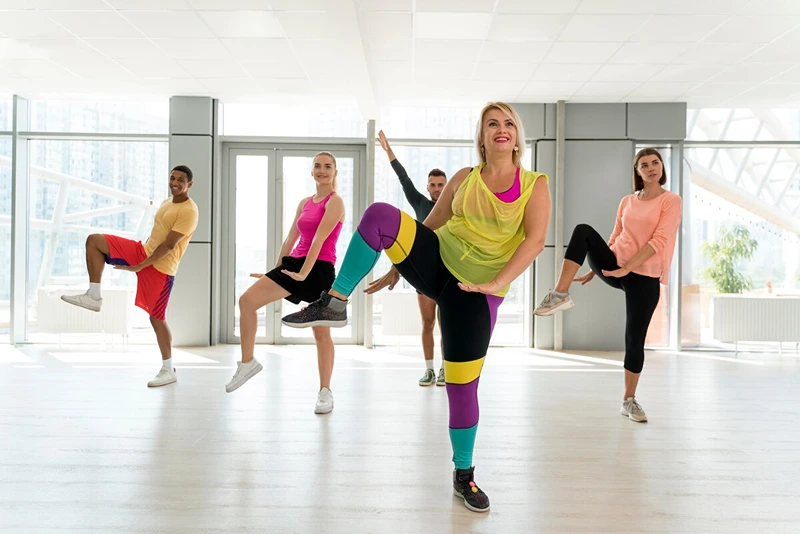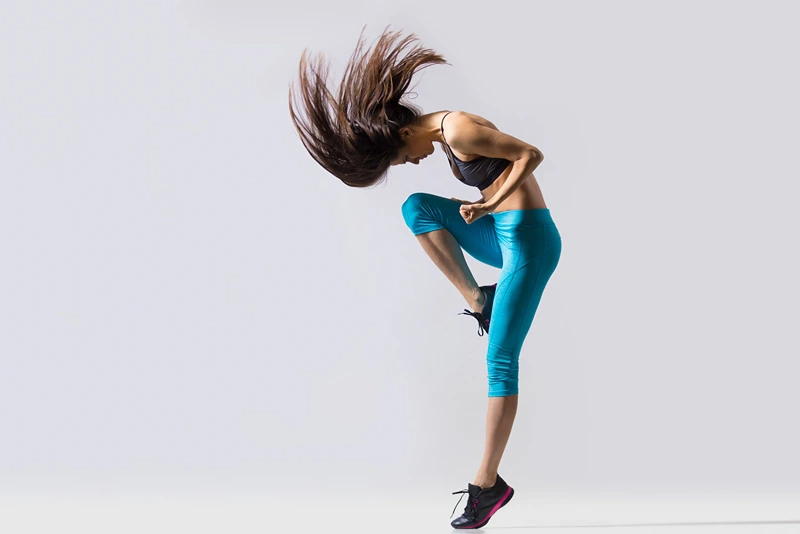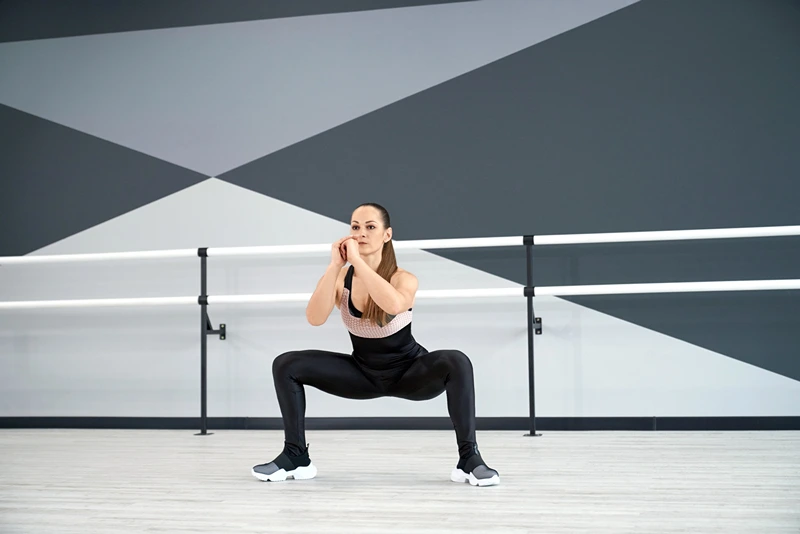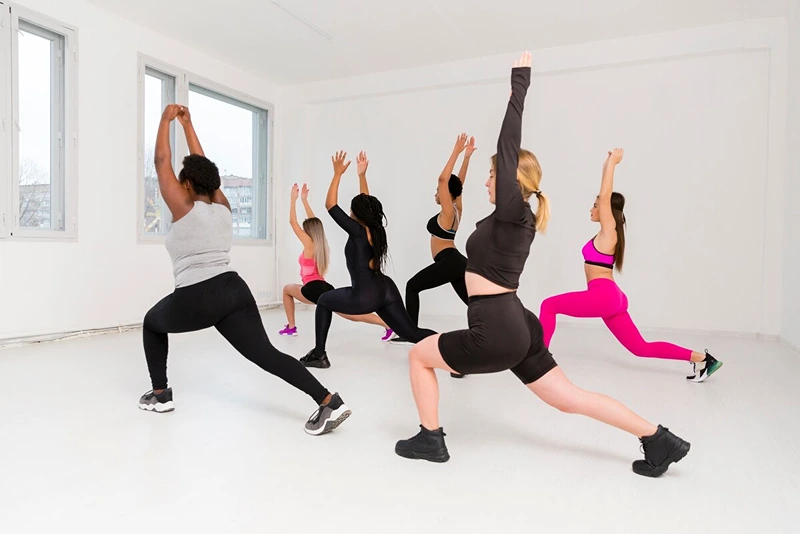Are you a dancer looking to take your performance to the next level? At Rac Women, we understand the importance of dance strength exercises in elevating your dance skills and overall physical well-being. Dancers are athletes in their own right, and building strength is vital to mastering complex routines, enhancing grace, and preventing injuries. In this article, we’ll guide you through the top dance strength exercises and offer expert insights to help you achieve your dance goals.
In This Article
I. Introduction to Dance Strength Exercises

Dance is an art form that demands both finesse and physical prowess. At Rac Women, we specialize in helping dancers, like you, achieve their maximum potential. Whether you’re a ballet dancer, contemporary dancer, or any other style, incorporating strength exercises can make a world of difference in your performance. Let’s dive into the world of dance strength exercises and explore the top 10 routines that can transform you into a stronger and more graceful dancer.
II. Benefits of Incorporating Strength Exercises in Dance
Dance strength exercises offer a multitude of benefits that can enhance your dancing. These benefits include:
- Improved Performance: Building strength enables you to execute moves with more precision and control.
- Injury Prevention: Strong muscles and joints reduce the risk of dance-related injuries.
- Enhanced Flexibility: Contrary to the myth that strength training makes you stiff, it can actually improve your flexibility.
- Better Posture: Strong core muscles promote good posture, an essential aspect of dance.
- Elevated Stamina: Enhanced endurance allows you to perform longer without fatigue.
III. The Top 10 Dance Strength Exercises
1. Plies with Resistance Bands
Plies are fundamental in ballet, and adding resistance bands to the routine strengthens leg muscles. Here’s a quick overview:
| Exercise | How To | Benefits |
|---|---|---|
| Plies with Bands | – Stand with feet hip-width apart.<br/>- Hold a resistance band in your hands, crossed in front of you.<br/>- Perform plies while pulling the band apart. | – Strengthening leg muscles.<br/>- Improving turnout.<br/>- Enhancing balance. |

2. Leg Raises and Extensions
Enhance your leg strength with leg raises and extensions. This exercise focuses on your lower body.
| Exercise | How To | Benefits |
|---|---|---|
| Leg Raises and Extensions | – Lie on your back with your hands under your hips.<br/>- Lift one leg at a time, keeping them straight.<br/>- Slowly lower each leg back down. | – Strengthening the core.<br/>- Improving leg flexibility.<br/>- Enhancing balance. |
3. Core Strengthening Workouts
Your core is the powerhouse of your dance moves. These exercises are essential for any dancer.
| Exercise | How To | Benefits |
|---|---|---|
| Core Strengthening | – Include exercises like planks, crunches, and leg lifts.<br/>- Focus on engaging your core muscles throughout. | – Improved balance and stability.<br/>- Enhanced posture.<br/>- Better execution of turns and leaps. |

4. Squats and Lunges
Strong legs are the foundation of dance. Squats and lunges are fundamental strength exercises.
| Exercise | How To | Benefits |
|---|---|---|
| Squats and Lunges | – Stand with feet hip-width apart.<br/>- Lower your body by bending your knees and hips.<br/>- Return to the starting position. | – Strengthening leg and glute muscles.<br/>- Enhanced power in jumps and lifts.<br/>- Improved balance. |
Continue reading for more dance strength exercises and their benefits.
5. Arm and Upper Body Strength Training
In many dance styles, graceful arm movements are crucial. Here’s how to work on your upper body strength:
| Exercise | How To | Benefits |
|---|---|---|
| Arm and Upper Body Strength Training | – Incorporate exercises like push-ups, tricep dips, and arm circles.<br/>- Focus on maintaining proper form throughout. | – Enhanced arm and shoulder strength.<br/>- Graceful arm movements.<br/>- Improved partnering skills in partner dances. |
6. Balance and Stability Drills
Dancers need excellent balance and stability. These exercises are designed to help you maintain control.
| Exercise | How To | Benefits |
|---|---|---|
| Balance and Stability Drills | – Include exercises like one-legged stands, relevés, and balance boards.<br/>- Concentrate on staying centered and stable. | – Improved balance and control.<br/>- Reduced risk of falling or stumbling during performances. |

7. Flexibility and Mobility Exercises
Flexibility is key to achieving those beautiful lines and movements in dance. Here’s how to improve it:
| Exercise | How To | Benefits |
|---|---|---|
| Flexibility and Mobility | – Incorporate stretches like the butterfly stretch, hamstring stretch, and hip flexor stretch.<br/>- Hold stretches for 20-30 seconds, avoiding bouncing. | – Enhanced range of motion.<br/>- Improved extension and lines in your dance movements.<br/>- Reduced muscle soreness. |
8. Plyometric Training for Explosive Power
Plyometric exercises can help you add an explosive element to your dance. Here’s how to incorporate them:
| Exercise | How To | Benefits |
|---|---|---|
| Plyometric Training | – Include exercises like squat jumps, tuck jumps, and box jumps.<br/>- Focus on powerful and explosive movements. | – Increased jump height and power.<br/>- Enhanced dynamic movements in dance routines.<br/>- Improved agility. |
The next section covers more dance strength exercises, including resistance band workouts and yoga.
9. Resistance Band Workouts for Dancers
Resistance bands are versatile tools for strengthening various muscle groups. Here’s how to use them effectively:
| Exercise | How To | Benefits |
|---|---|---|
| Resistance Band Workouts | – Include exercises like lateral leg lifts, seated rows, and standing chest presses using resistance bands.<br/>- Choose appropriate resistance levels. | – Targeted muscle strengthening.<br/>- Added resistance for more challenging workouts.<br/>- Improved flexibility and coordination. |
10. Yoga for Strength and Flexibility
Yoga offers a holistic approach to building strength, flexibility, and mental focus. Here’s how to incorporate it:
| Exercise | How To | Benefits |
|---|---|---|
| Yoga for Strength and Flexibility | – Participate in yoga classes or follow |

VIII. The Role of Nutrition in Dance Strength Training
Dance strength training demands more than just exercise; it requires proper nutrition to fuel your body effectively. Here are some dietary recommendations to support your dance strength journey:
| Food Group | Recommendations |
|---|---|
| Protein | Lean sources like chicken, fish, and tofu. |
| Carbohydrates | Complex carbs from whole grains and fruits. |
| Fats | Healthy fats from avocados and nuts. |
| Vitamins and Minerals | Incorporate a variety of fruits and vegetables. |
| Hydration | Stay well-hydrated with water and electrolyte-rich fluids. |
A well-balanced diet is the fuel that keeps your body in top condition, aiding in muscle recovery and overall performance.
IX. Staying Motivated and Consistent
Remaining motivated throughout your dance strength training journey can be challenging but is vital for long-term success. Here are some tips to help you stay dedicated and enthusiastic:
- Set clear, achievable goals for your dance and strength training.
- Track your progress through a training journal or fitness app.
- Join dance classes or groups to stay inspired and share experiences with fellow dancers.
- Reward yourself for reaching milestones, no matter how small.
- Keep your routine fresh and engaging to prevent boredom.
- Visualize your dance goals and the benefits of your strength training during challenging moments.
- Remember that dedication and consistency are key to success in dance.
X. The Science Behind Dance Strength Exercises
Understanding the science behind muscle development and strength training can provide valuable insights into the efficacy of these exercises. As you work on your dance strength, you’ll experience:
- Muscle Hypertrophy: The process of muscle growth due to resistance training.
- Neural Adaptation: Improved nerve-muscle communication, leading to increased strength.
- Muscular Endurance: Enhanced ability to perform dance moves over extended periods.
- Improved Joint Health: Strengthening muscles around joints can reduce the risk of injuries.
- Energy Expenditure: Strength training burns calories, aiding in weight management.
Now, you have a deeper understanding of why dance strength exercises are crucial to your dance journey. By embracing these exercises, you’re not just enhancing your physical capabilities; you’re mastering the science behind dance performance.

XI. FAQs – Dance Strength Exercises
Let’s address some of the frequently asked questions related to dance strength exercises. We’ve gathered these based on Bing’s “People Also Ask” section for the keyword. Our expert answers will provide you with the information you need.
Dancers should aim for 2-3 strength training sessions per week, with a day of rest between sessions. Consistency is key.
While strength training is essential, it should complement, not replace, regular dance practice. Both are crucial for optimal performance. Strength training helps enhance dance skills but does not replace the need for practice and technique.
For ballet dancers, plies, leg raises, core exercises, and resistance band work are highly effective. These exercises target the specific muscle groups required for the grace and precision of ballet movements.
Yes, flexibility training is important for all dance styles. Flexibility enhances your range of motion, allowing for more graceful and fluid movements, which are essential in various dance styles.
Results vary among individuals, but many dancers experience improvements in strength and performance within a few weeks to a few months of consistent training. Remember that dedication and consistency are key to seeing progress.
Ellen Crandall
Meet Ellen, your fitness compass in the world of athletics, training, and gym culture. With a commitment to well-being and a penchant for all things workout-related, Ellen is here to guide you on your journey to a healthier, fitter you. Join the fitness revolution, led by Ellen, and embrace the power of an active lifestyle.




